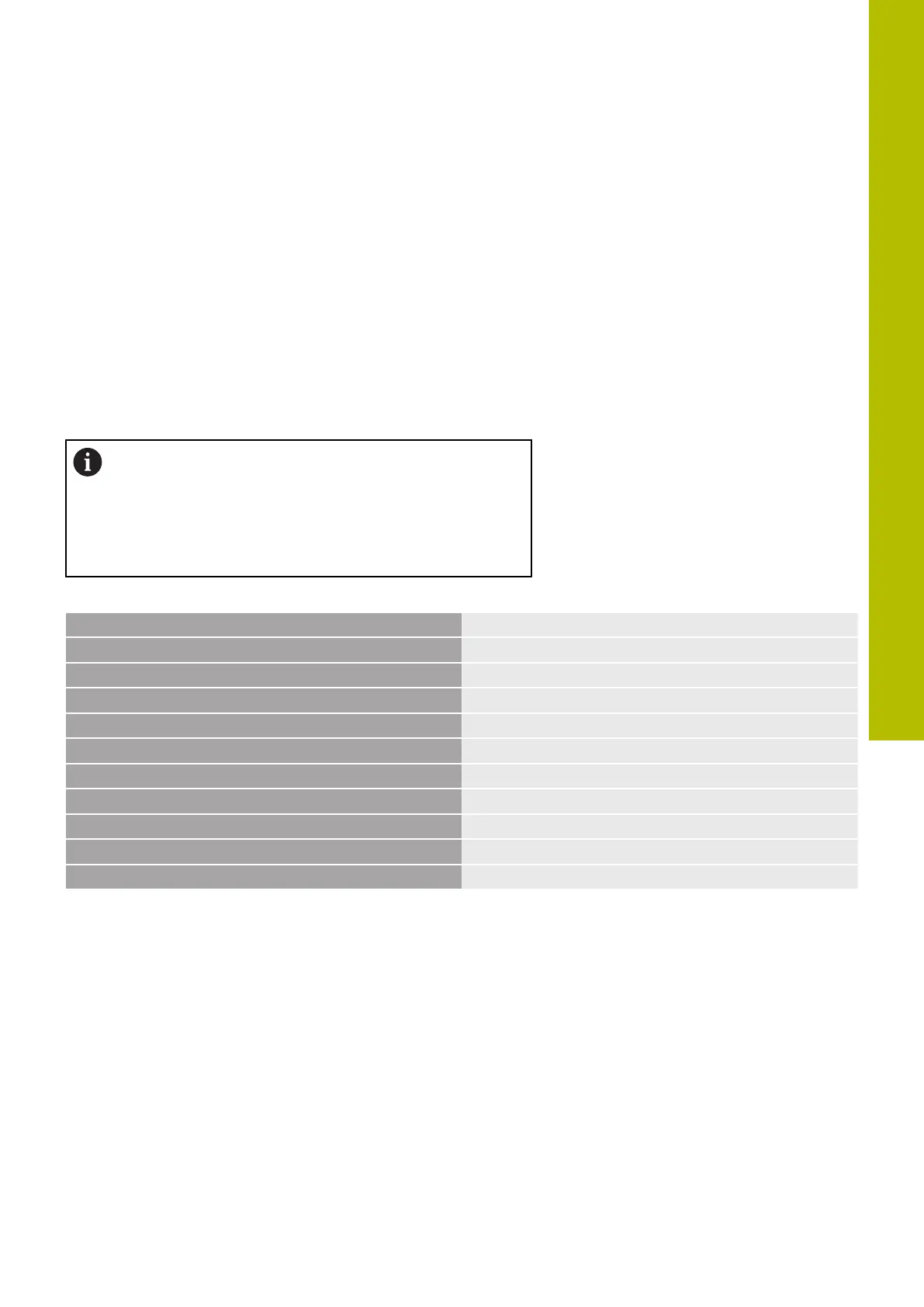Programming Qparameters | If-then decisions with Q parameters
Jump conditions
Unconditional jump
An unconditional jump is programmed by entering a conditional
jump whose condition is always true. Example:
FN 9: IF+10 EQU+10 GOTO LBL1
Conditioning jumps with counters
The jump function allows you to repeat a machining operation any
number of times. A Q parameter serves as a counter that increments
by 1 at every program section repeat.
The jump function allows you to compare the counter with the
number of desired machining operations.
These jumps differ from the subprogram and program
section repeat programming techniques.
On the one hand, for example, jumps require no
completed program section ending with LBL 0. On the
other hand, jumps do not take these return jump labels
into consideration!
Example
0 BEGIN PGM COUNTER MM
1 ;
2 Q1 = 0
Loaded value: Initialize counter
3 Q2 = 3
Loaded value: Number of jumps
4 ;
5 LBL 99
Label
6 Q1 = Q1 + 1
Initialize counter: New Q1 value = Old Q1 value + 1
7 FN 12: IF +Q1 LT +Q2 GOTO LBL 99
Run program jumps 1 and 2
8 FN 9: IF +Q1 EQU +Q2 GOTO LBL 99
Run program jump 3
9 ;
10 END PGM COUNTER MM
9
HEIDENHAIN | TNC620 | Klartext Programming User's Manual | 01/2022
281

